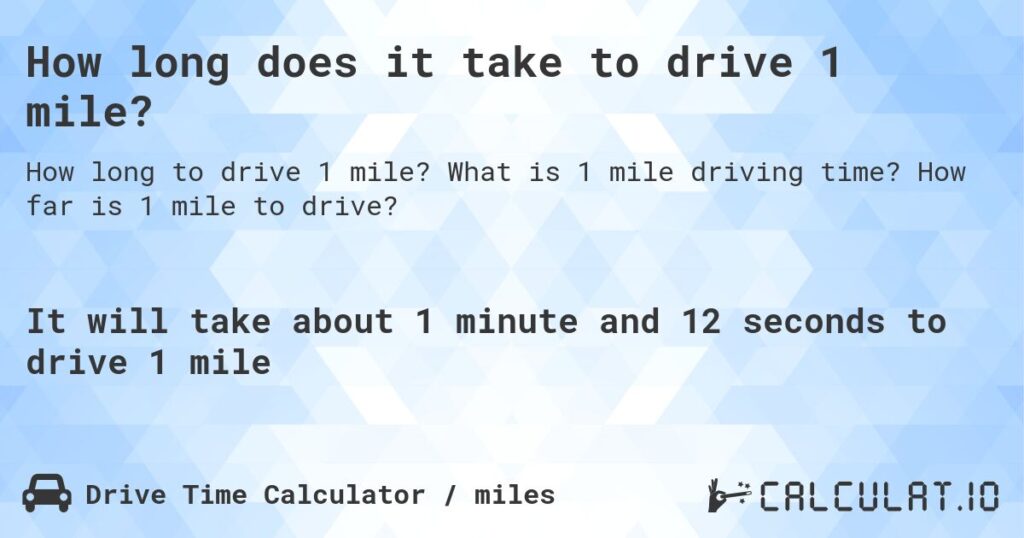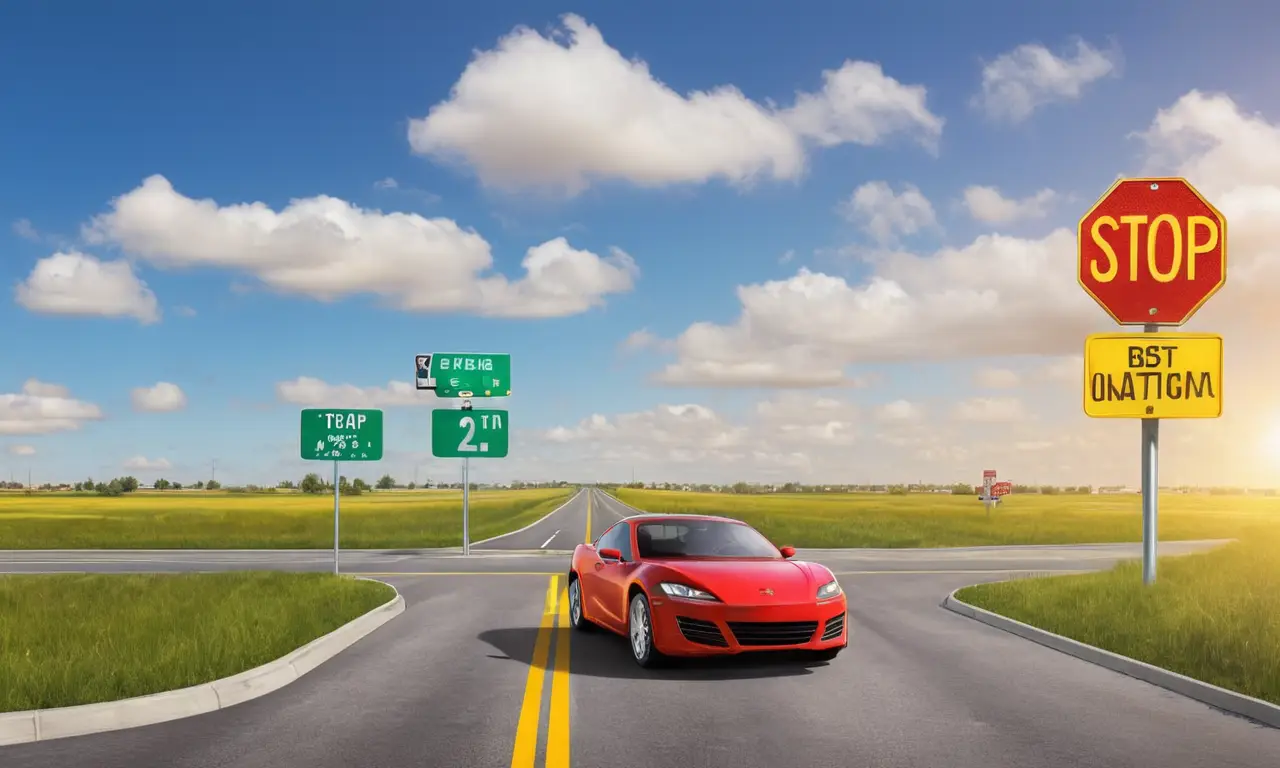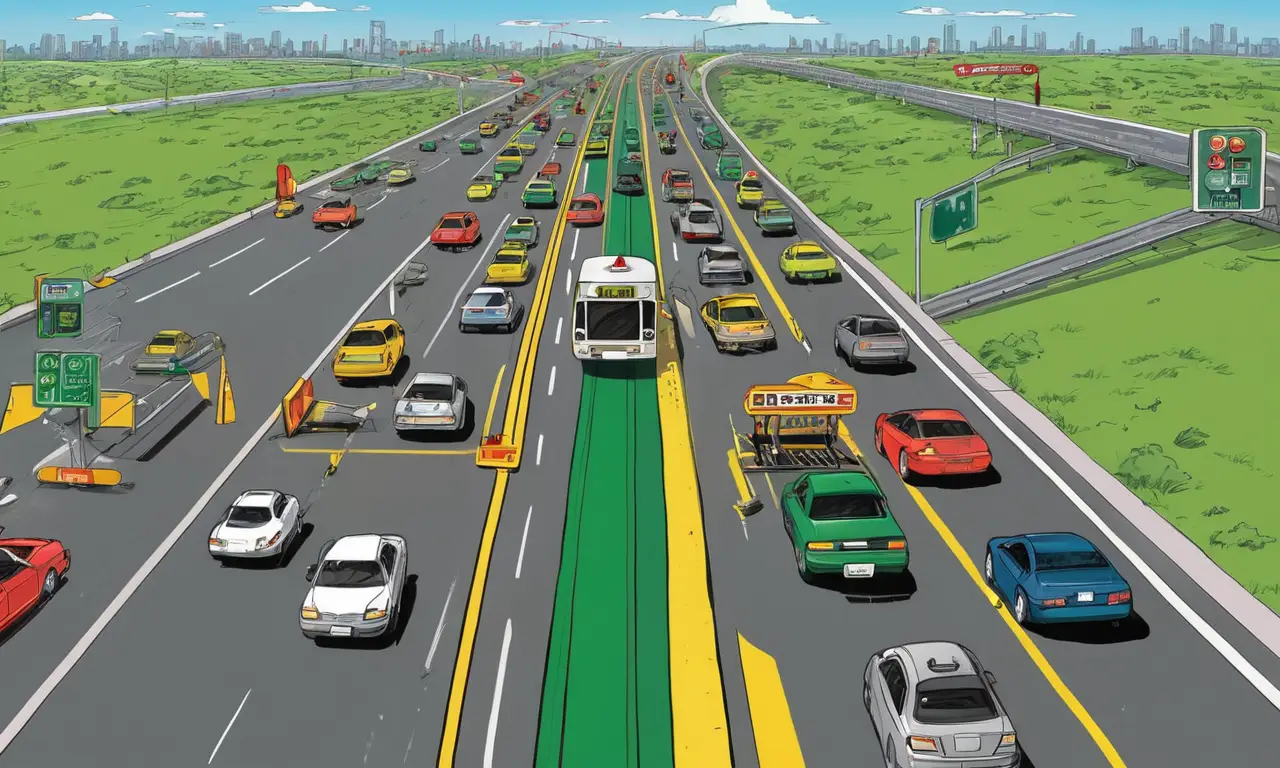
Ever wondered how long it actually takes to cover just one mile on the road? It seems like a simple question, but the answer isn’t always straightforward. The time it takes to drive a mile can vary greatly depending on several factors, including speed limits, traffic conditions, and even the type of vehicle you’re driving. In this article, we’ll delve into the complexities of calculating mile-driving time and provide you with valuable insights to help you estimate your travel duration more accurately.
This article will explore the relationship between driving speed and time, examine average mile travel times under different conditions, and discuss the factors that can significantly impact your journey length. We’ll also offer practical tips for planning your trips effectively, taking into account potential delays and variations in traffic flow.
Driving Speed and Time
The most fundamental factor influencing how long it takes to drive a mile is your speed. This relationship is directly proportional: the faster you drive, the less time it takes to cover a given distance.
Think of it like this: if you’re driving at 60 miles per hour, you’ll complete one mile in approximately one minute. Conversely, if you’re traveling at 30 miles per hour, it will take you twice as long – two minutes – to cover that same mile. This simple calculation highlights the direct correlation between speed and time.
However, it’s crucial to remember that adhering to posted speed limits is essential for safety and legal compliance. Exceeding the speed limit can lead to fines, accidents, and other serious consequences.
Average Mile Travel Time

While individual driving speeds can vary widely, we can establish some general average mile travel times under typical conditions.
On highways with a 60 mph speed limit and light traffic, you can expect to cover one mile in approximately one minute. In urban areas with lower speed limits (typically 30-45 mph), it might take between two and three minutes to drive a mile. Remember that these are just averages, and actual travel times can fluctuate significantly based on the factors we’ll discuss next.
Factors Affecting Driving Time
Beyond speed, several other factors can influence how long it takes to drive a mile.
Road Conditions: Smooth, well-maintained roads allow for faster travel compared to bumpy or congested routes with construction zones or potholes. Adverse weather conditions like rain, snow, or fog can also significantly reduce visibility and necessitate slower speeds, increasing your travel time.
Traffic Density: Heavy traffic congestion is a major contributor to extended driving times. Stop-and-go traffic patterns can drastically increase the time it takes to cover even short distances.
Vehicle Type: The type of vehicle you’re driving can also play a role. Larger vehicles like trucks or SUVs may experience slightly slower acceleration and top speeds compared to smaller cars, potentially affecting your overall travel time.
Traffic Conditions Impact

Traffic conditions are arguably the most unpredictable factor influencing mile-driving time.
Rush hour commutes, accidents, road closures, and special events can all lead to significant traffic congestion, causing delays that can extend your journey considerably. It’s always a good idea to check real-time traffic updates before embarking on your trip, especially during peak hours or in areas known for heavy traffic.
Planning Your Journey
To ensure you arrive at your destination on time and minimize the impact of unexpected delays, it’s crucial to plan your journey effectively.
Allow Extra Time: When estimating travel time, always factor in a buffer for potential traffic congestion, construction zones, or other unforeseen circumstances. This extra cushion will give you some leeway if things don’t go exactly as planned.
Utilize Navigation Apps: Real-time navigation apps like Google Maps or Waze can provide valuable insights into current traffic conditions, suggesting alternative routes and estimated travel times based on real-world data.
Conclusion
Determining how long it takes to drive a mile is more complex than simply calculating speed and distance. Numerous factors, including speed limits, traffic conditions, road quality, and even the type of vehicle you’re driving, can influence your travel time. By understanding these variables and planning your journeys accordingly, you can arrive at your destination safely and on schedule. Remember to always prioritize safety by adhering to posted speed limits and adjusting your driving behavior based on prevailing conditions.
